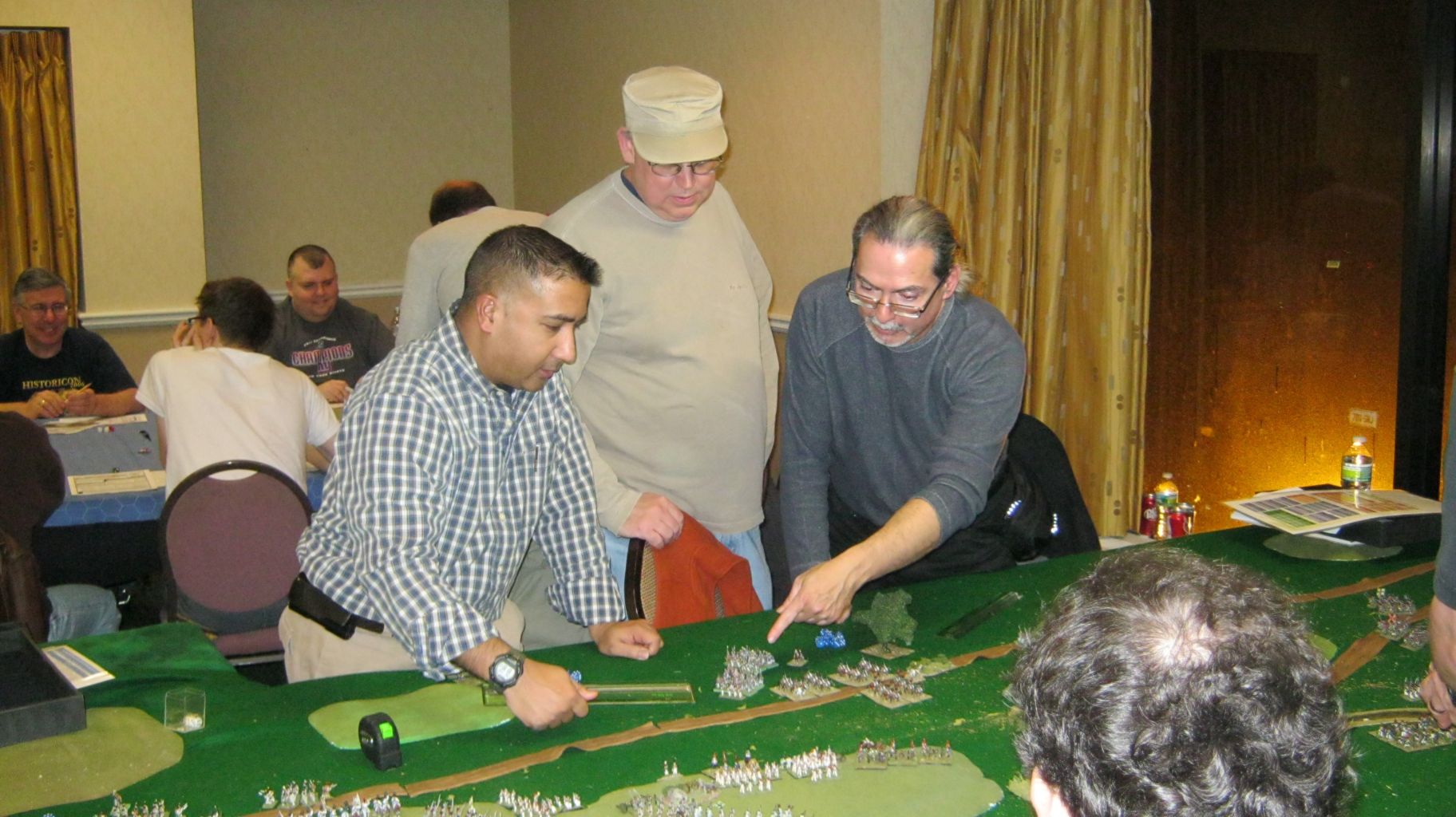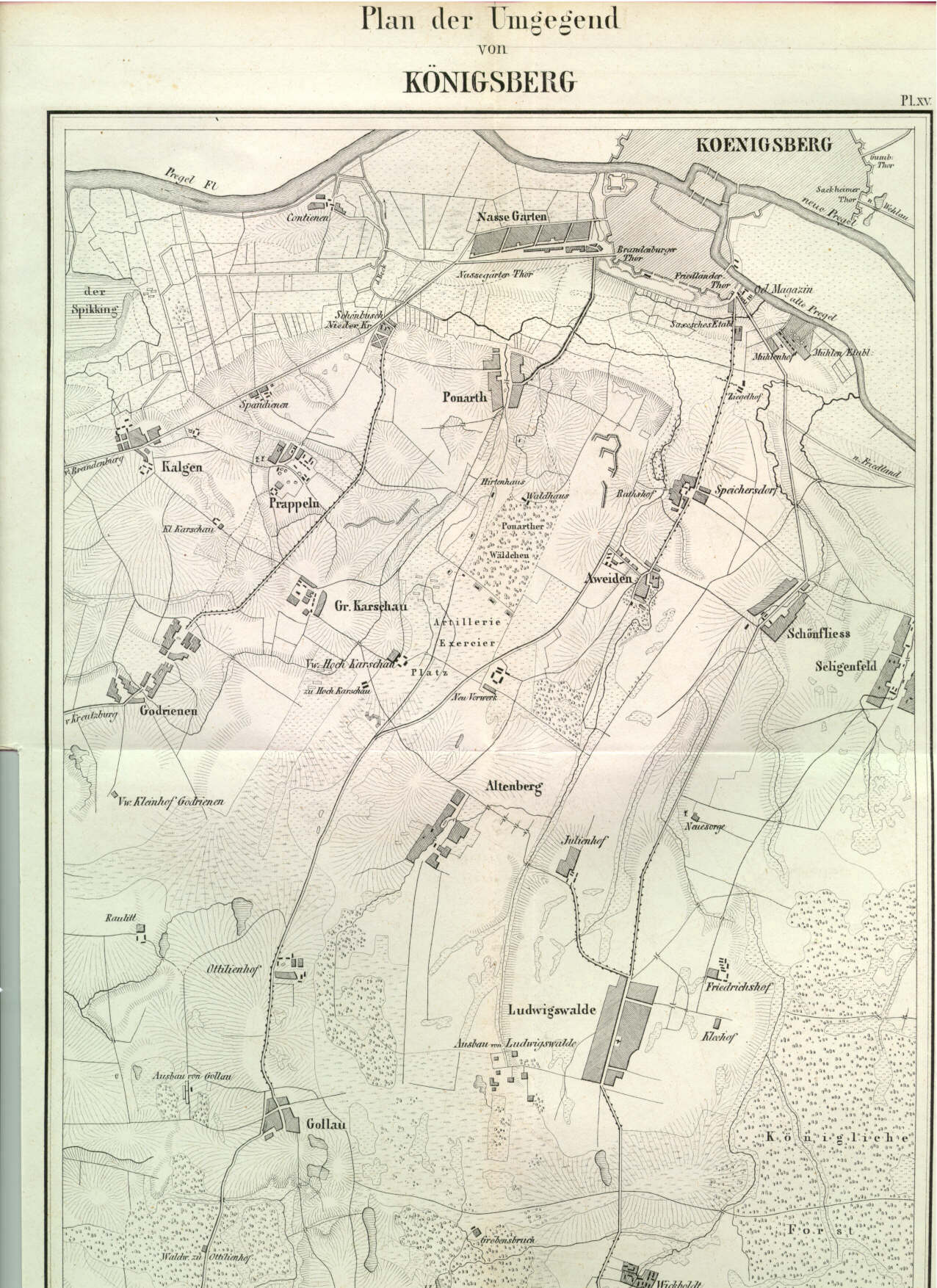The Battle of Konigsberg 1813
CGC After Action Report

The Polish French played by (from left to right) Vik, Karl and Fritz (respectively.)
We played a "what-if" battle.
The 200th anniversary of Konigsberg January 5, 1813.

MacDonald's X Corps is abandoned by the Prussian forces and their heavy cavalry, which was the main cavalry element. This left the remaining forces of French, Poles and Westphalians on their own to hold Konigsberg. Bearing down on them is the Army of Finland led by Count Steinheil. Historically, there was some skirmishing but MacDonald leaves the city to its fate. Count Steinheil and his forces are allowed to jubilantly march into the city and continue to press MacDonald's fleeing forces.
Instead of leaving Konigsberg, a key depot in this region, Napoleon orders MacDonald to stay and hold the vital city. Napoleon reinforces the Poles of the X Corps with an ad hoc brigade of French infantry and cavalry rummaged from several Corps available from the remnants of the Grande Armee.
Using the actual orders of battle I was able to find, I used the Napoleon at Bay downloads available from the NaW website to build the forces. It turned out to be a pretty even 2,900 points per side battle. The Polish/French are outgunned in artillery, out manned in infantry and outclassed in cavalry.
The Polish Division were out manned 20 battalions to 12 until the 6 battalion French brigade reserve arrived on turn 3. Out gunned 36 guns to 12, but the Polish had a grand battery as Konigsberg was a supply depot. And third, they are outclassed in cavalry, three light cavalry units against the Russian reserve battle cavalry brigade of Chevalier Guard (Elite Guard), Life Guard (Guard) and Pskov Cuirassier.
This event was staged using 15mm figures.
Frozen marsh (difficult, no artillery) is just south of Aweiden and is along either side of the stream. A forest is in the center of the table with a victory objective behind it. It is flanked by ridgelines that extended to Altenberg to the south and halfway to Aweiden on the north side.
On the southern ridgeline was placed the second victory objective. The French were deployed along the center of the table. The Poles setup a battalion in each town, the grand battery and two brigades on the long ridgeline south of the woods and the other battery with a brigade on the northern ridge-line stretching to Aweiden. The light cavalry brigade formed up in columns outside of Altenberg.
On this part of the battlefield, the Polish battery there found itself in a sanguinary artillery duel with the Greg's Russian artillery across the stream. The polish infantry hiding behind the reverse slopes of the ridge-line and in the forest kept themselves in reserve until the Russians finally crossed the marshes and came at the Polish Lines. Fritz unleashed a murderous volley of canister and musket fire. Mike's Russian columns wavered then halted. Only one battalion was able to bring combat and it was thrown back with heavy loss.
In the center Greg's Russian jager and infantry battalions slowly pushed the Poles from the forest and in sight of the victory objective. However, they could not go much farther as Fritz formed the Polish battalions into a battle line with Vik's reserve French infantry that arrived just in time to hold the center from collapsing.
The action of the day took place on the southern ridge-line after the French Cavalry withdrew. On the ridge-line, Vic commanded the grand battery and a Polish battalion for support. Facing him are Jim's jagers and line infantry battalions supported by his Russian battery. Thomas on the French left, also swung two battalions and two batteries of his brigade to support Jim's assault on the center.
It was grand...
It was glorious...
It was sanguinary.
The Russians made it to the crest of the ridge-line, forcing the heavy guns of the grand battery to flee their guns. The victory objective they guarded now disputed by the remnants of Jim's brigade.
But that was the high water mark.
Vik's battalions formed a firing line of muskets causing Jim's brigade to disintegrate. Karl's squares formed a line of muskets and punished the cuirassier. That is how turn 6 ended.
The Polish right giving ground but still clung on to the victory objective. The Russian assault stalled on all fronts, they would retire to lick their wounds.
Parting Shots Dept.,
"Alexander, Caesar, Charlemagne, and myself founded
empires; but what foundation did we rest the creations of our
genius?
Upon force. Jesus Christ founded an empire upon love; and at this
hour millions of men would die for Him"
- Napoleon Bonaparte